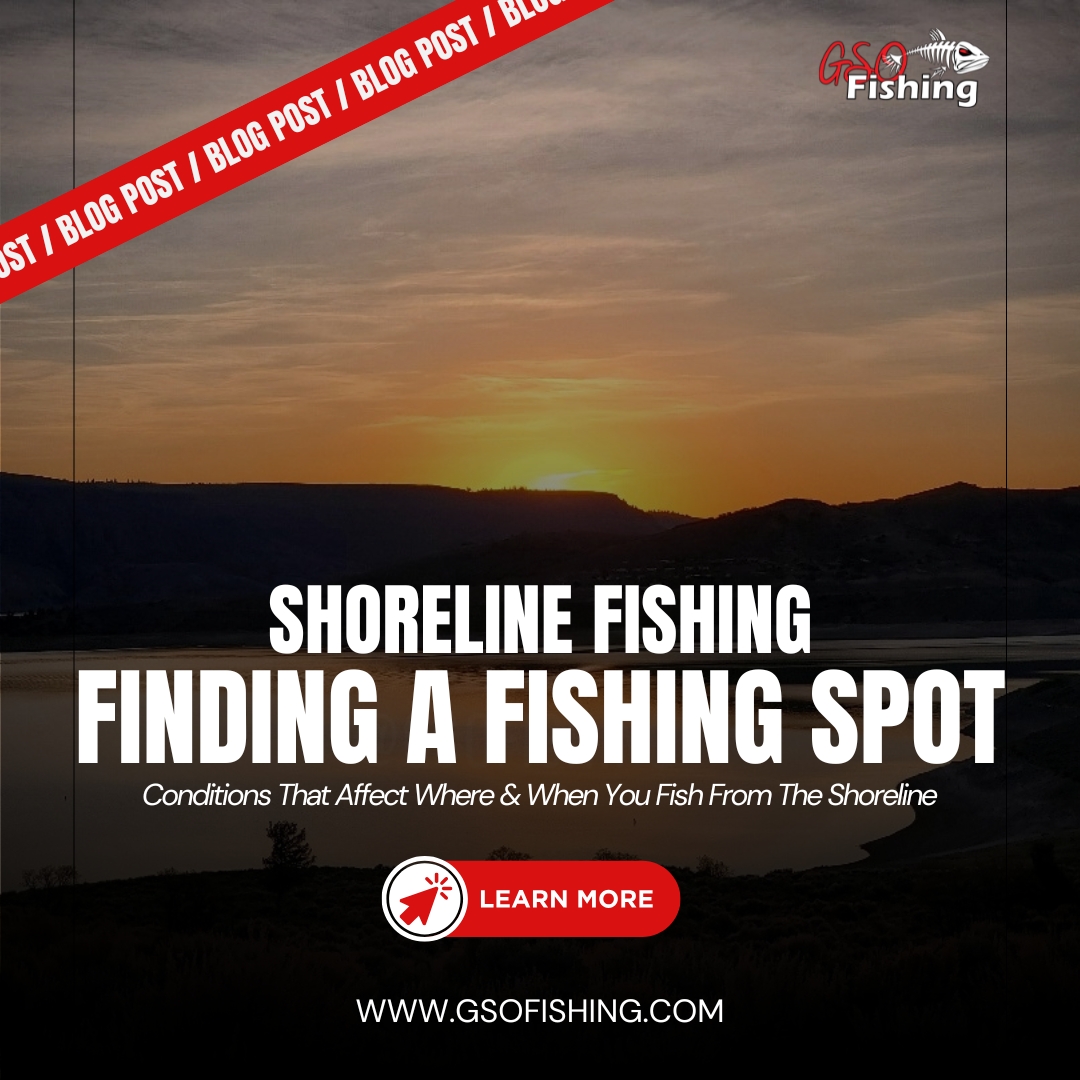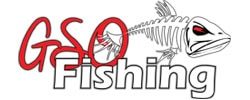
Conditions That Affect Where, When, & How You Fish From The Shoreline
One of the most frequent questions we hear from anglers is, “Where should I go fishing?” While your target species is the primary factor in deciding where to cast your line, there are numerous other factors that can dictate your fishing success. As part of our Shoreline Fishing Series, we are discussing the different elements of location selection that every shoreline angler should consider. Understanding these elements can significantly enhance your chances of a successful outing.
What Are You Fishing For?
This is the most fundamental question. Different species frequent different types of water bodies and environments. For instance, trout are often found in cooler, oxygen-rich waters, while bass may prefer warmer, vegetated areas. Knowing your target species’ habits and preferences is essential for choosing the right spot.
Season
Fish behavior changes with the seasons, affecting where they can be found. During spring, many species move closer to shorelines to spawn, making them easier to target from the bank. Conversely, in the winter, some fish retreat to deeper waters, requiring different tactics and locations.
Shoreline Crowding
The popularity of a fishing spot can impact your experience and success. Highly trafficked areas might mean spooked fish, but they can also indicate abundant fish activity. Choose based on your preference for solitude versus action.
Rough Terrain & Safety
Safety should always be a priority. Assess the accessibility and safety of the terrain. Rocky or slippery shorelines require careful navigation and appropriate gear to prevent accidents. (For more Rough Terrain and Shoreline Safety Information visit our Shoreline Safety Blog Post & Level Up Fishing Podcast Episode.)
Wind Direction
Wind can play a big role in where fish decide to hang out. When it’s windy, baitfish often get pushed toward the bank, and the predators aren’t far behind. This means you could have a good chance of finding active fish feeding close to shore on windy days. However, tackling the wind requires some thought. Braided line, for example, might not be your best choice in strong winds as it can tangle and knot, especially if you’re casting into the wind. On the other hand, if the wind is at your back, it can help you cast farther and cover more water. This can be a great advantage as you can reach areas that might otherwise be out of your usual casting range, increasing your chances of a catch.
Water Clarity/Runoff
Spring thaw, rainstorms, and high winds can significantly affect water clarity by stirring up silt and creating muddy conditions. While some anglers may avoid these areas, muddy conditions can actually offer excellent fishing opportunities. For instance, fishing the edge of a mudline, where clearer water meets the stirred-up sediment, can be incredibly productive. Fish often use these boundaries as feeding zones, taking advantage of the nutrients and smaller prey brought in by the runoff. Successful fishing in these areas heavily depends on lure selection
Shoreline Debris
While debris like submerged bushes or trees can create hazards for navigation, they also provide excellent cover for fish. These areas often harbor smaller species that attract predatory fish, making them hotspots for anglers. Although these spots might seem challenging due to potential snags, don’t immediately rule them out. Choosing the right lure is crucial to your success in these environments.
Trees
Overhanging trees can be double-edged swords. They offer shade and protection for fish, which can lead to excellent fishing, but they also pose risks for snagging your line. The presence of trees might require you to adapt your casting technique to avoid losing tackle or disturbing the fish. Techniques like the roll cast are particularly effective in these environments as they minimize the likelihood of snagging overhead branches. This method allows you to keep your lure and line low, making it easier to fish beneath the foliage without getting tangled.
Transition Points
Transition points along the shoreline, where different water depths, currents, or bottom compositions meet (such as transitions from sand to rock), are prime fishing spots. Fish frequently travel and feed along these natural “edges” as they offer diverse habitats and rich feeding opportunities. These areas are typically easy to identify from the Shoreline and can increase your chances of success. By strategically positioning yourself at these transition points and targeting the areas where these structural changes occur, you can enhance your fishing effectiveness and potentially land more catches. (For more on this topic, check out our Fishing Transition Points Instant Training.)
Shallow Pockets
Don’t eliminate shallow water! These areas can heat up or cool down more quickly than the surrounding water, attracting specific species depending on the time of day and year. Morning and evening are prime times to check these spots.
Limited Access
Sometimes, access to prime fishing spots can be restricted by conditions beyond your control. Ice formation, ongoing fishing tournaments, or environmental conservation efforts can temporarily block access to certain areas of the shoreline. On these days, you might find yourself fishing where you can, rather than where the fishing is best. Adapting to these circumstances and having a flexible approach to location selection can still provide a fulfilling fishing experience, even if it’s not in your ideal spot.
Putting this info to practical use can really step up your fishing game. Let’s break down a couple of scenarios to show how you can pick the best spot:
Example 1: Targeting A Particular Species
- Targeting perch? Look for clear water—they need it to spot predators. Find places with submerged bushes or chunky rocks where perch can hide and hunt. These spots are not just good for perch to feel safe, but they also attract smaller fish & bugs that the perch eat.
Example 2: Just Want to Catch Anything?
- If you’re not set on any particular species and just want to see what bites, aim for a large flat. It’s a busy spot where many types of fish come to feed. Make sure your lures match the conditions around you (Shorleine trees, submerged bushes, moss, etc.) to increase your chances of success.
Finding A Fishing Spot Conclusion:
While you could simply head to the lake and choose a random spot, which might still land you a catch, taking a more strategic approach will greatly enhance your chances of a successful day of fishing. Understand the type of fish you’re after, how the seasons affect their behavior, and how things like wind and water clarity play into where they might be. Even tricky spots with lots of debris or limited access can be great places to fish if you know how to tackle them. Keep all this in mind to not just fish, but fish smarter. Whether you’re targeting a specific species or just happy to catch whatever bites, this approach can help you make the most of your time by the water.
We hope you’ve found this information helpful! Be sure to check out our other Blog Posts, YouTube Channel, and Online Courses as well as our Guided, On The Water Trainings and our lineup of premium fishing products in our Tackle Shop!
If you have any questions visit our Contact Us page, or email us at info@gsofishing.com. We are here to help. – Team GSO Fishing
